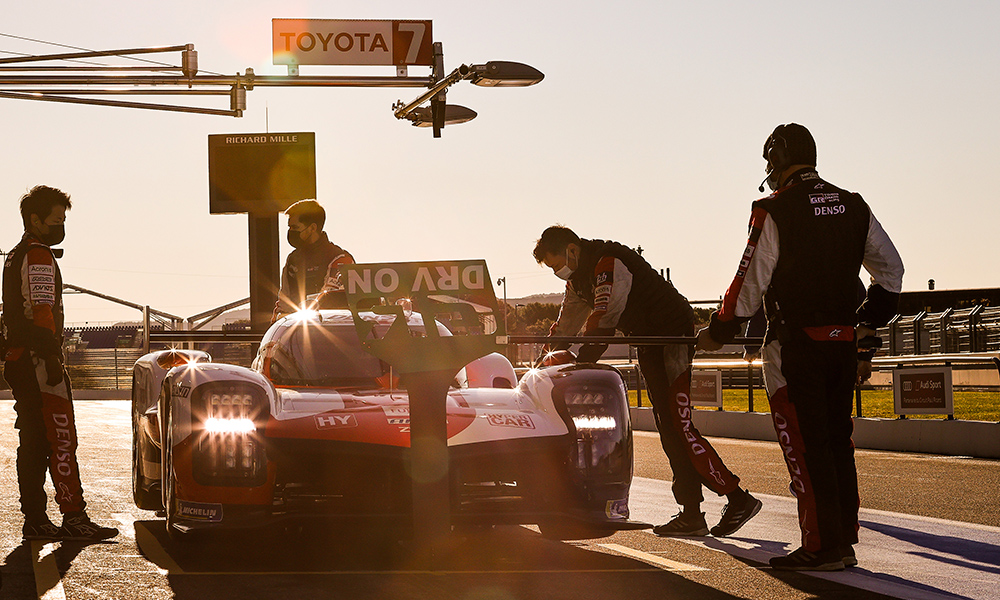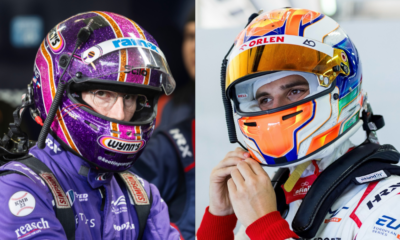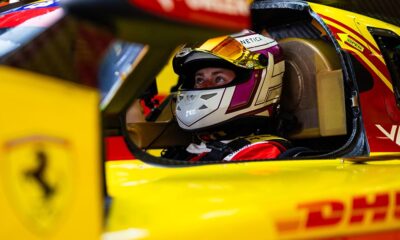
Photo: Toyota
Toyota Gazoo Racing Europe technical director Pascal Vasselon believes they’re on the “back foot” in terms of testing compared to the incoming manufacturers to the Hypercar class of the FIA World Endurance Championship.
The Japanese manufacturer, which will embark on its third season with the Toyota GR010 Hybrid in 2023, will face new competition from factory LMDh operations Porsche and Cadillac, as well as the new Ferrari 499P LMH car.
All three automakers have been completing significant testing ahead of next year, including recent 36 and 24-hour endurance tests for Porsche Penske Motorsport and Cadillac Chip Ganassi Racing, respectively.
While Ferrari has yet to complete a long-distance endurance test, Vasselon said he’s been impressed by the Italian manufacturer’s progress as well.
“It’s looking good and testing a lot with two cars, which is impressive,” he told Sportscar365.
“It seems like we are not anymore at the right level from our side because we have not tested since April apart from the official collective tests [at Le Mans and Bahrain].
“Now we are a bit on the back foot compared to the other teams coming with big budgets and doing a lot of tests.”
While Toyota is set to roll out with a “subtle” evolution to its LMH car next year, Vasselon said they “don’t have so much [new] to test” but has questioned the allowance of unlimited testing for Hypercar manufacturers in its first full season of competition.
That provision currently also applies to Peugeot, which debuted its 9X8 LMH car mid-season at this year’s 6 Hours of Monza.
Toyota, meanwhile, has been limited to 20 test days this year per the Hypercar sporting regulations, which is understood to have been a topic of discussion for 2023.
While not disclosing how may test days it utilized this year, Vasselon admitted they were “far from the allocation” due to budget reasons.
“We are still discussing that,” Vasselon said of next year’s testing regulations. “For us, we are a bit worried that we are going to a very high number of test days. But it’s not finalized.
“Of course, we would be keen to have regulations that would keep the spirit of the category, which is to allow to compete at low cost.
“For sure, if the regulations allow a huge number of test days, then you need a test team. It’s another level of budget. At the moment we are operating with one race team and that’s it. We do what the race team can do.”
Team director Rob Leupen, meanwhile, is confident that Toyota will “step up” to the challenge of the new manufacturers next year.
“You always would like to do some more testing and we were struck with regulations here, which we not always used completely, but I think where we need to step up, we will step up,” Leupen told Sportscar365.
“We will do this in time and we will do this with the measures we need to do.
“Of course on the other side, we should know our car pretty well. The team should be working good. We should try to keep that on that level and improve step by step, as we’ve done over time.
“It’s good that the others are coming. It’s good that it’s getting more competitive.
“I hope we have the right level for the game but if not we have to raise it quickly.”
Toyota Confident of LMH, LMDh Parity
Vasselon said he’s confident of the FIA and ACO’s Balance of Performance system in place to produce parity between the LMH and LMDh platforms next year.
While the IMSA WeatherTech SportsCar Championship will feature an all-LMDh grid for 2023, the WEC will be mixed between the two formulas.
“I think there’s been a lot of work done on that,” Vasselon said. “From the technical side with the convergence process with a lot of simulation activities which have somehow step by step started to balance.
“For example, our very high [hybrid] deployment speed is already [implemented] to anticipate the convergence. The regulations introduced in Monza for the differential is as well to anticipate it.
“A lot of work has been done already on the technical side. Then there will be, I’m sure, part of the BoP process that will address the balance between the two categories. So I think it should be under control.”
Daniel Lloyd contributed to this report





















